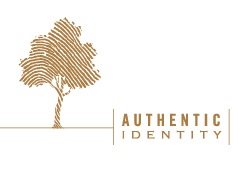By Tony Tiernan , Samantha Keller & Michelle Stearns
What can the difference between a straight line and a circle teach us about building a sustainable economic system that fuels growth without destroying our planet? And what do brands have to do with it?
The answers are “lots” and “lots”, respectively.
This is the first in a series of posts in which we will explore the relationship between brands and sustainability. So we thought we should start by questioning whether consumerism itself is sustainable. Is it reaching the end of its useful life? And if it is, what can replace it as an engine for economic growth?
The law of unintended consequences has meant that the existing model of consumption makes many of us sick, unhappy, stressed, and time-starved; it fails to produce affordable food that sustains healthy life; it fails to offer work that gives us a healthy sense of meaning and purpose; it gradually renders the planet itself unviable; and it makes only 1% of us wealthier.
For most of us, this is not a good deal. For our children, it’s disastrous.
In his book ‘Cradle to Cradle’, William McDonough recognized that in nature’s cyclical design, resources are infinite. But human industry is driven by a linear economic model:
Take (resources) – Make (stuff) – Dispose (dump when the new version comes out).
So which is the better (more sustainable) option? That’s where the circle comes in.
Instead of “throw away and replace” we move to “return and renew” where we design products and components to be disassembled and regenerated. In effect, today’s products become tomorrow’s resources – a concept called the Circular Economy.
Unrealistic dreaming? McKinsey & Company produced a detailed economic study of the circular economy that estimates the global value of resource efficiency could reach $3.7 trillion annually, resulting in “an aggregated economic benefit of $10 billion by 2015.”
Recently the CE 100 Summit met in London, a network of 100 leading global companies committed to facilitating development and commitment to new circular economy projects.
Several leading brands have signed on to the Circular Economy initiative, including a handful of sustainability leaders that are featured on Interbrand's Best Global Green Brands 2013 report, including Coca-Cola, Philips, IKEA, H&M and Cisco.
Consider too the rapid growth of the “sharing economy”, a set of businesses and brands based on the proposition that it’s better to rent something when you need it, rather than own it forever (and therefore see the asset lie unused for much of its life). Upstart brands like AirBnB, RelayRides and city-branded bike sharing schemes are building loyal followers in the “rent, don’t own” space.
Recognizing the obvious benefits to the planet, to people and to profits, established brand heavyweights and fast-growing brand innovators are moving quickly to establish advantage through sustainability.
To quote William McDonough: ‘Our goal is a delightfully diverse, safe, healthy and just world, with clean air, water, soil and power - economically, equitably, ecologically and elegantly enjoyed. Period! Which part of this don't you like?’
We will explore this issue of brands and sustainability further over the coming months. Meanwhile, please let us know what you think.
____________________________________________________________________
Michelle Stearns is a Senior Consultant at BrandTaxi, a specialized branding firm that delivers powerful insights and ideas to drive brand strategy, business growth and bottom-line results. Learn more at www.Brand-Taxi.com
Sam Keller has over a decade’s experience in brand strategy, brand communication and advertising. She is now focused on Social Media Strategy and online content development.


